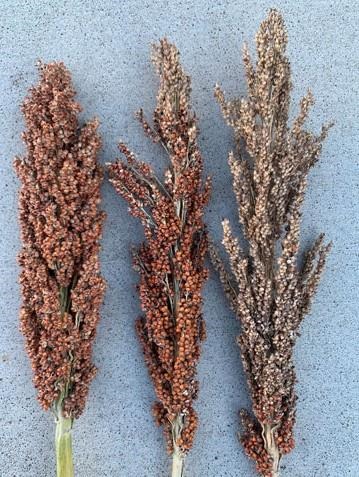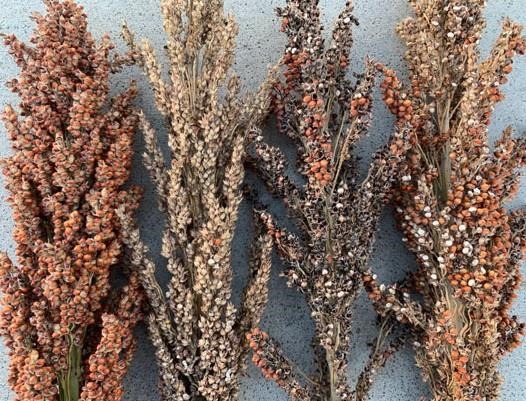
Figure 1. From left to right: Undamaged panicle from plants that began blooming July 25; slightly damaged panicles from plants that began blooming August 5; and severely damaged panicle from plants that began blooming August 11. Photo by Anthony Zukoff, K-State Research and Extension.

Figure 2. White panicle variety: undamaged head on the left severely damaged head on the right from a plant blooming the first week of September. Photo by Anthony Zukoff, K-State Research and Extension.
In addition to midge damage, headworm and bird damage were prevalent in the later-blooming field but are easy to differentiate (Figure 3). One more pest that could cause midge-like damage is Lygus bugs. Lygus bug damage can be difficult to distinguish from midge, especially when it is extensive. Lygus bug damage tends to be confined to very distinct bands across the head (or all at the top, or all at the bottom), because they are very fussy about feeding only on milk stage grain. Usually, midge damage is more distributed up and down the head, almost always with some full grains interspersed between all the blanks. That is because the midge will not lay an egg in every flower, but the adult lygus bug is much more systematic in feeding behavior.
If you have observed midge damage this season anywhere in the state, please consider sending a report to the email list below that includes an estimate of acreage impacted and panicle damage. For additional information and control options, please refer to the Sorghum Insect Pest Management Guide.

Figure 3. Various types of damage to sorghum heads. Left to right: undamaged head, severe sorghum midge damaged head, a head with heavy bird damage and on the right, a head exhibiting headworm damage. Photo by Anthony Zukoff, K-State Research and Extension.
Source : ksu.edu